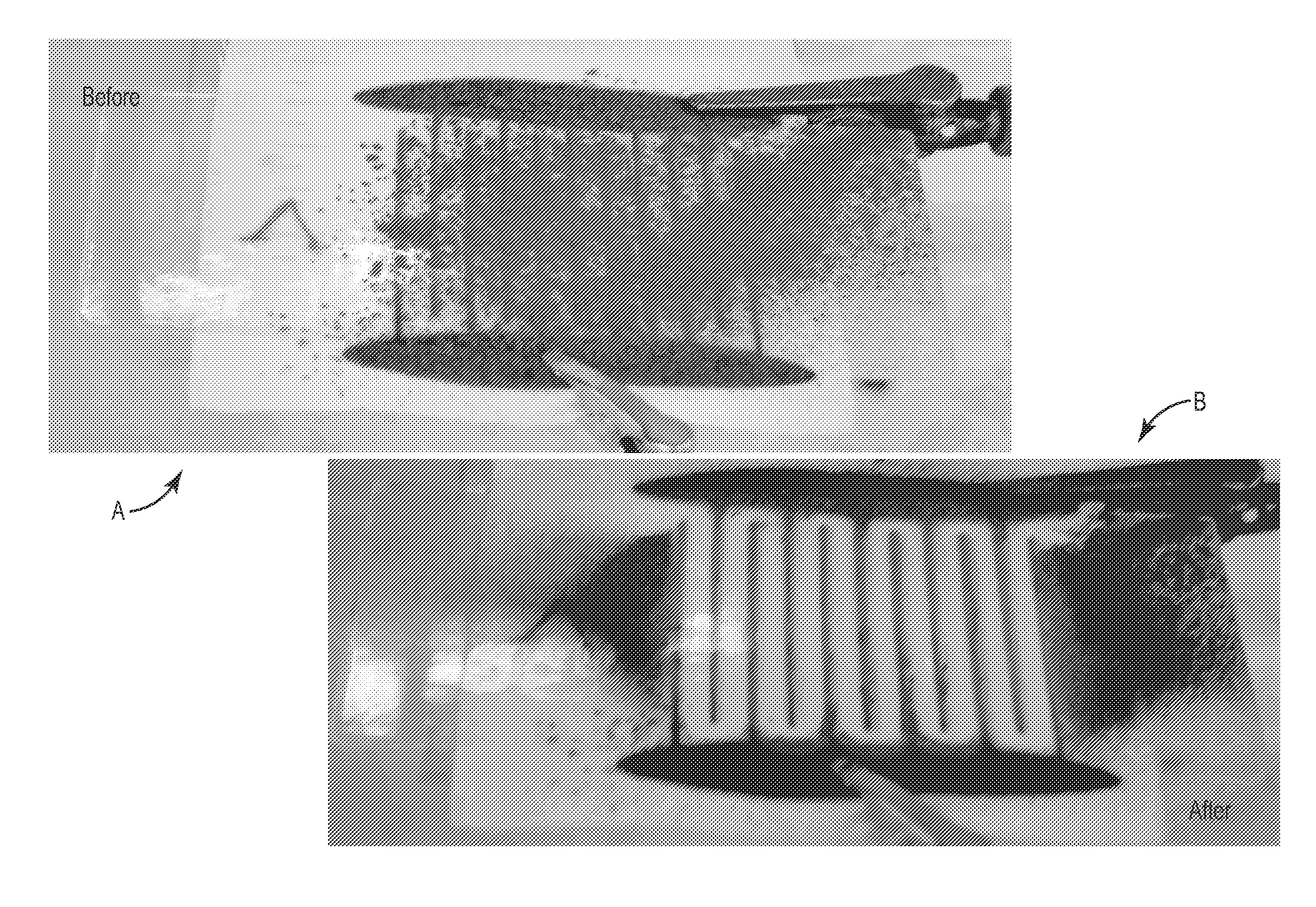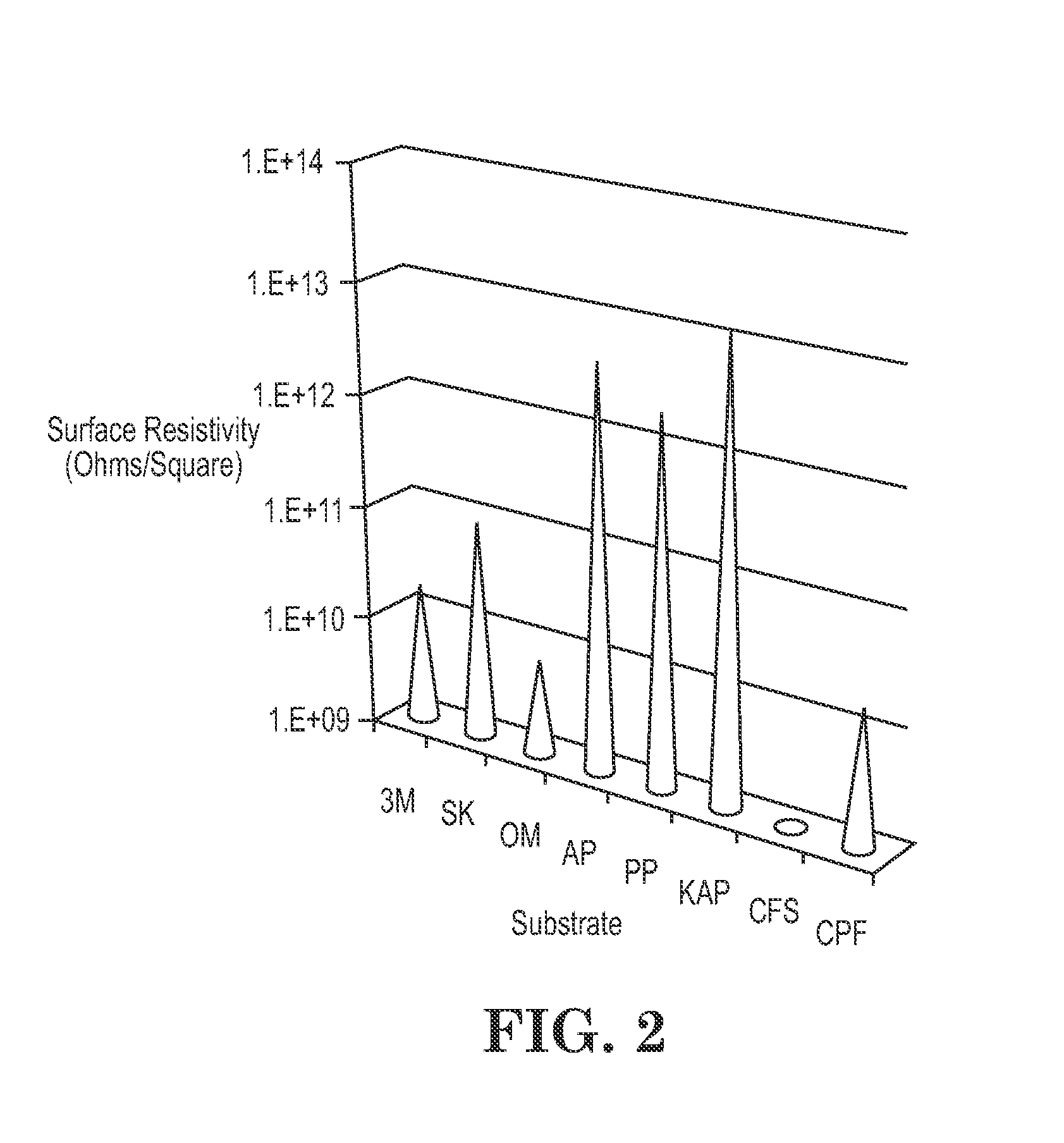Inkjet Printing of Conductive Carbon Nanotubes, Inherently Conductive Polymers, and Metal Particle Inks
a technology of conductive carbon nanotubes and inherently conductive polymers, which is applied in the direction of insulated conductors, non-metal conductors, cables, etc., can solve the problems of insufficient conductive for most uses, high resistance or lower conductivity in the prior art, and high resistance of conductive materials applied by printing
- Summary
- Abstract
- Description
- Claims
- Application Information
AI Technical Summary
Benefits of technology
Problems solved by technology
Method used
Image
Examples
example 1
Inkjet Printing of Conductive Ink Containing Carbon Nanotubes.
[0075]The feasibility of printing conductive inks was investigated for integration as the damage detection layer in an in-situ wire damage detection system. Inkjet printing is a common commercial process used in every wire construction. Manufacturers are required by law to print the wire type, gauge, and safety information on the exterior of each foot of manufactured wire. It was hypothesized that this methodology could be used to impart a printed conductive layer onto the wire insulation. To accomplish this, a conductive ink would need to be deposited using a method similar to the commercial wire printing technology.
[0076]The printing method was also examined as a possible means to improving the conductivity of the detection layer. Various commercial off-the-shelf (COTS) printing methods, such as thermal and piezoelectric inkjet printing, screen printing, and bubble jet printing, were examined as different methods for in...
example 2
Printed CNT Electrically Conductive Material Layer as a Dust Screen
Methods:
[0091]Conductive inks were printed onto various substrates as described in Example 1.
Results:
[0092]In FIG. 8 CNT conductive material was applied to a cotton substrate with an inkjet printer in a pattern of lines. The sheet was then laminated with polyethyleneterphthalate (PET) to protect the conductive ink. The dark areas in panel B are the areas with conductive material applied. The white areas did not have conductive ink applied. Dust was applied to the sheet in panel A. A voltage was then applied to the sheets. Panel B shows the same sheet after application of the voltage. Dust was repelled from the entire surface area containing the printed electronics.
[0093]FIG. 9 shows the same result when the CNT conductive material was printed onto a larger cotton substrate with a different conductive pattern.
[0094]FIG. 10 shows the results when the cotton substrate was placed in a vacuum chamber before and after an a...
example 3
Conductive Ink Formulation 1
Ink Formulation
[0095]1.81 g single-wall carbon nanotubes, 0.30 g sodium dodecyl sulfate, and 40.0 g deionized water were placed in a container and the mixture was agitated for 30 seconds by shaking The dark suspension was mixed using a SONICS VCX-750 ultrasonic probe for 60 minutes at 32% amplitude. Care was taken to ensure that only ˜¼ inch of the probe tip was below the surface of the liquid during the sonication process. An additional 2.0 ml of deionized water was added and the dark suspension was mixed using an ultrasonic probe for another 60 minutes (32% amplitude). The suspension was very viscous and difficult to work with. The suspension was transferred to a large container and diluted with several 40.0 ml portions of deionized water to provide a printable conductive ink.
Processing and Evaluation
[0096]The printed conductive ink test specimen was allowed to dry at room temperature and humidity (20° C.., 50% R.H.) until no liquid was visible. After d...
PUM
| Property | Measurement | Unit |
|---|---|---|
| Temperature | aaaaa | aaaaa |
| Surface resistivity | aaaaa | aaaaa |
| Sheet resistance | aaaaa | aaaaa |
Abstract
Description
Claims
Application Information
 Login to View More
Login to View More - R&D
- Intellectual Property
- Life Sciences
- Materials
- Tech Scout
- Unparalleled Data Quality
- Higher Quality Content
- 60% Fewer Hallucinations
Browse by: Latest US Patents, China's latest patents, Technical Efficacy Thesaurus, Application Domain, Technology Topic, Popular Technical Reports.
© 2025 PatSnap. All rights reserved.Legal|Privacy policy|Modern Slavery Act Transparency Statement|Sitemap|About US| Contact US: help@patsnap.com



